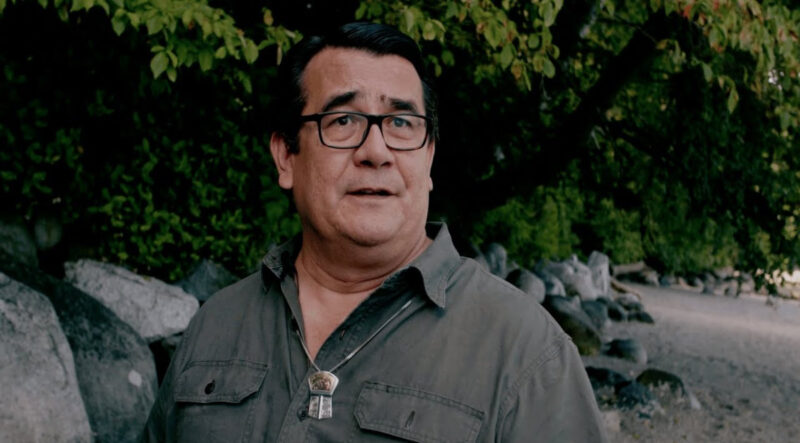BC’s anti-salmon farming activist gets it wrong again
No link between wild salmon returns in British Columbia and active salmon farms
By Fabian Dawson
SeaWestNews
British Columbia’s anti-fish farming activists are world-renowned for spreading falsehoods about salmon aquaculture on Canada’s west coast.
And they are it again, this time wrapping the anticipated strong returns of many species of Pacific salmon to the closure of a few salmon farms in the Broughton Archipelago.
Leading the pack with nothing but science-deficit speculation is Bob Chamberlin of the First Nations Wild Salmon Alliance.
Chamberlin, whose group wants open-net farms removed from B.C.’s waters, has been peddling his claims via some media outlets which faithfully report on his rhetoric without challenging his claims.
In several appearances on Vancouver radio, newspapers and television news, Chamberlin speculated this week that the closure of some salmon farms in the Broughton Archipelago area in 2020 will result in a strong return of pink salmon returning to the Ahta river this year to spawn.
His press release claimed that this is “compelling evidence” that salmon farms are a “primary cause” of declines in wild salmon.
“His soundbites may sound simple – but his facts are simply wrong,” said Ruth Salmon, Interim Executive Director at the BC Salmon Farmers Association.
“In his eagerness to ride the wave of good news about the potential strong returns of many species of Pacific salmon returning to rivers in B.C. this year, Mr. Chamberlin has severely misrepresented historical data and relied on speculation to try and prove his unwavering belief that there is a relationship between wild salmon returns and salmon farms,” she said.
“However, the facts are there is no causative link, let alone a correlation, related to salmon farm activity and salmon returns…Pink salmon returns are very volatile, so much so that one can cherry pick a single river in any year and make up a story to support their belief.”
The Department of Fisheries and Oceans (DFO) has also poured cold water over Chamberlin’s claims and shared a scientific explanation behind the robust salmon returns in 2022.
‘The bottom line: it’s the cooler conditions”, reported Salmon Business.
DFO said some salmon species, like Sockeye, returning to spawn in 2022 entered the ocean during the tail end of a marine heatwave and have experienced cooler conditions associated with a La Nina beginning in the latter half of 2020, which prevented extremely warm ocean temperatures from developing.
“Cooler conditions are generally more favourable for food sources and growth and survival of salmon at sea. Three consecutive years of La Nina conditions are favourable to most salmon populations,” said DFO according to Salmon Business.
The stock that’s being witnessed as returning more abundantly is sockeye. DFO estimates that 4.3 million Sockeye will return this year based on the 50 percent returns seen so far in the test fishing area. The full data is expected in December.
Meanwhile, the BC Salmon Farmers Association (BCSFA) has issued a statement providing facts and data to counter Chamberlin’s claims about returning Pink salmon in the Ahta river;
- An average of 19,291 pink salmon have returned to the Ahta river over the last decade in the ‘even’ years (pink salmon return in two-year cycles).
- 907 salmon returned in 2020 – a relatively low return that mirrored the coast-wide low return of most all species of Pacific salmon (Mr. Chamberlin incorrectly states this number as 200). 11 salmon farms were active during the outmigration (moving from rivers to open sea) for these salmon (March 2019).
- A record-high return of 68,871 pink salmon returned in 2014. A total of 12 salmon farms were active in the area during this outmigration (March 2013).
- A total of 11 salmon farms were active during the outmigration for this year’s (2022) return (March 2021). Returning populations for this year have yet to be confirmed by fisheries experts, but early reports suggest strong returns of pink and Sockeye salmon may occur in many regions of B.C.
“For many years, we’ve frustratingly been witness to anti-salmon farming campaigners going to media early with speculation and anecdotes to influence negative headlines about salmon farming in British Columbia,” said BCSFA’s Ruth Salmon.
“The facts – that never receive the same exposure from media as the criticisms – have not once supported these allegations.”
Several court decisions and a range of scientific studies have found open-net salmon farming in B.C. and neighbouring waters pose no more than a minimal risk to wild salmon. But the activists, including Chamberlin, have refused to believe any science that contradicts their beliefs.
(Screenshot from a YouTube video shows Bob Chamberlin)

